Gellir lawrlwytho cynnwys at ddefnydd anfasnachol, megis defnydd personol neu ar gyfer adnoddau addysgol.
Ar gyfer defnydd masnachol cysyllwch yn uniongyrchol gyda deilydd yr hawlfraint os gwelwch yn dda.
Read more about the The Creative Archive Licence.
Disgrifiad
Towards the end of World War War II, military scientists lead by Sir Alwyn Crow CBE, Director and Controller of Projectile Development, at Fort Halstead, were charged with developing Britain's answer to the long-range rockets or flying bombs developed by the Germans. Between June 1944 and March 1945, these rockets - the V1 more popularly known as the doodlebug and the later V2 - had brought devastation to London and the southeast.
A new Guided Projectile Project was established headed up by Sir Alwyn, and this document sets out the organisations involved, their tasks, and the resources that were to be deployed. The Ynyslas Range was nominated to provide facilities for testing.
Sir Alwyn reported to a top level committee (the Guided Projectile Progressing Committee) comprising representatives from the Admiralty, War Office and Air Ministry as well as a US Naval attaché and representatives from the Canadian Military. He was responsible for overseeing technical groups working in 3 areas of research - stabilisation and control; aerodynamics and propulsive ducts; and the development of liquid fuels.
The Project was tasked with the delivery of various forms of anti-aircraft, ship-to-ship and artillery weapons, with August 1947 being the first deadline for delivery of prototype missiles for naval use.
The guided projectiles research programme brought together some 40 civilian and service personnel from the Radar Research Defence Establishment (RRDE), Signals Research and Development Establishment (SRDE), Sir Frank Whittle’s Power Jets (Research and Development) Ltd and private companies such Asiatic Petroleum Company (formed by Shell and Royal Dutch Oil Companies) and Laporte Chemicals Ltd (for the production of hydrogen peroxide).
According the project outline prepared by Sir Alwyn in November 1945, the Ynyslas establishment was to be called Ministry of Supply Experimental Establishment Anti-Aircraft (MOS EE AA) Ynyslas and was to be manned by 9 officers and 202 ordinary ratings (excluding cooks and ratings) under a Superintendant of Experiments (S of X).
The National Archives, Kew, document reference: AVIA 48/1

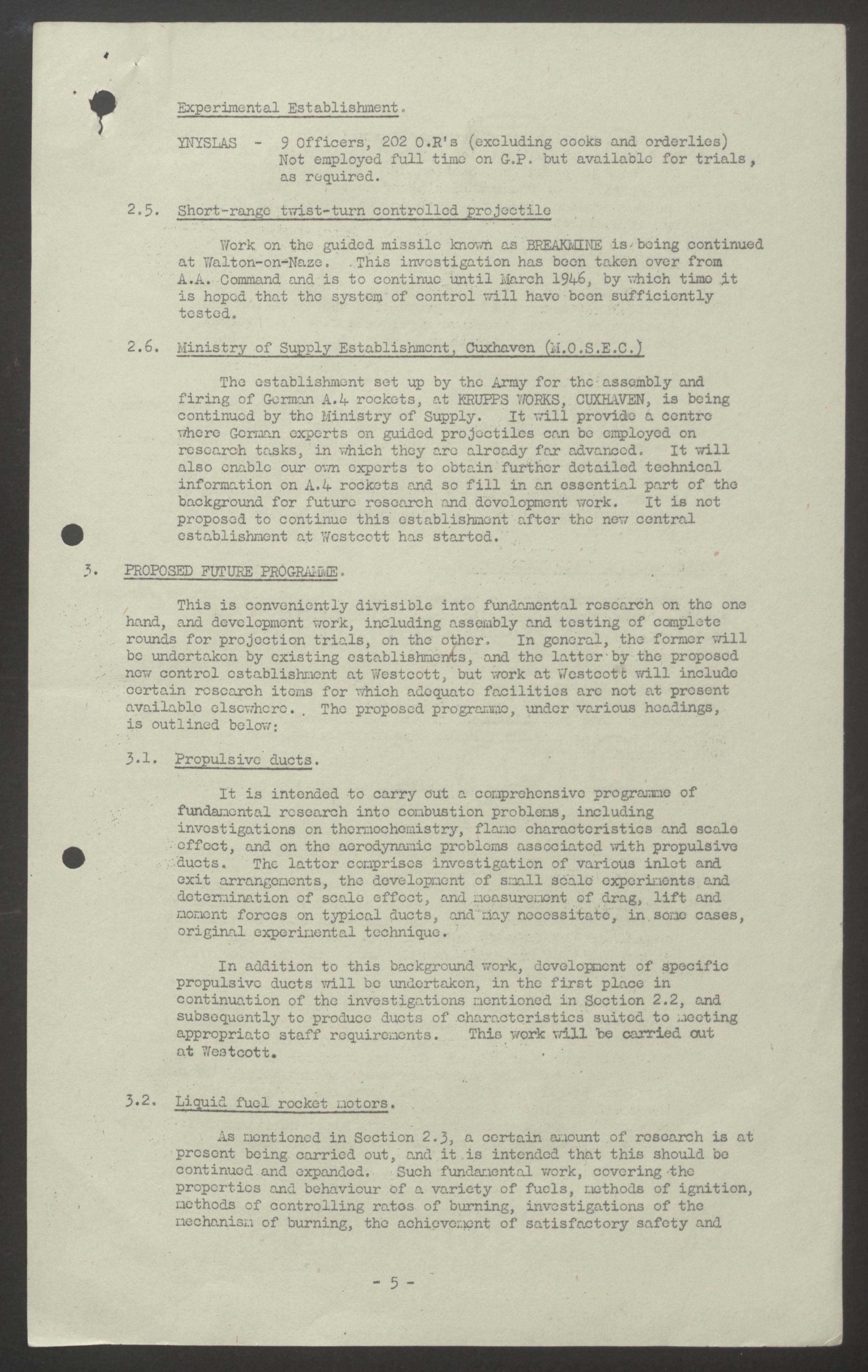

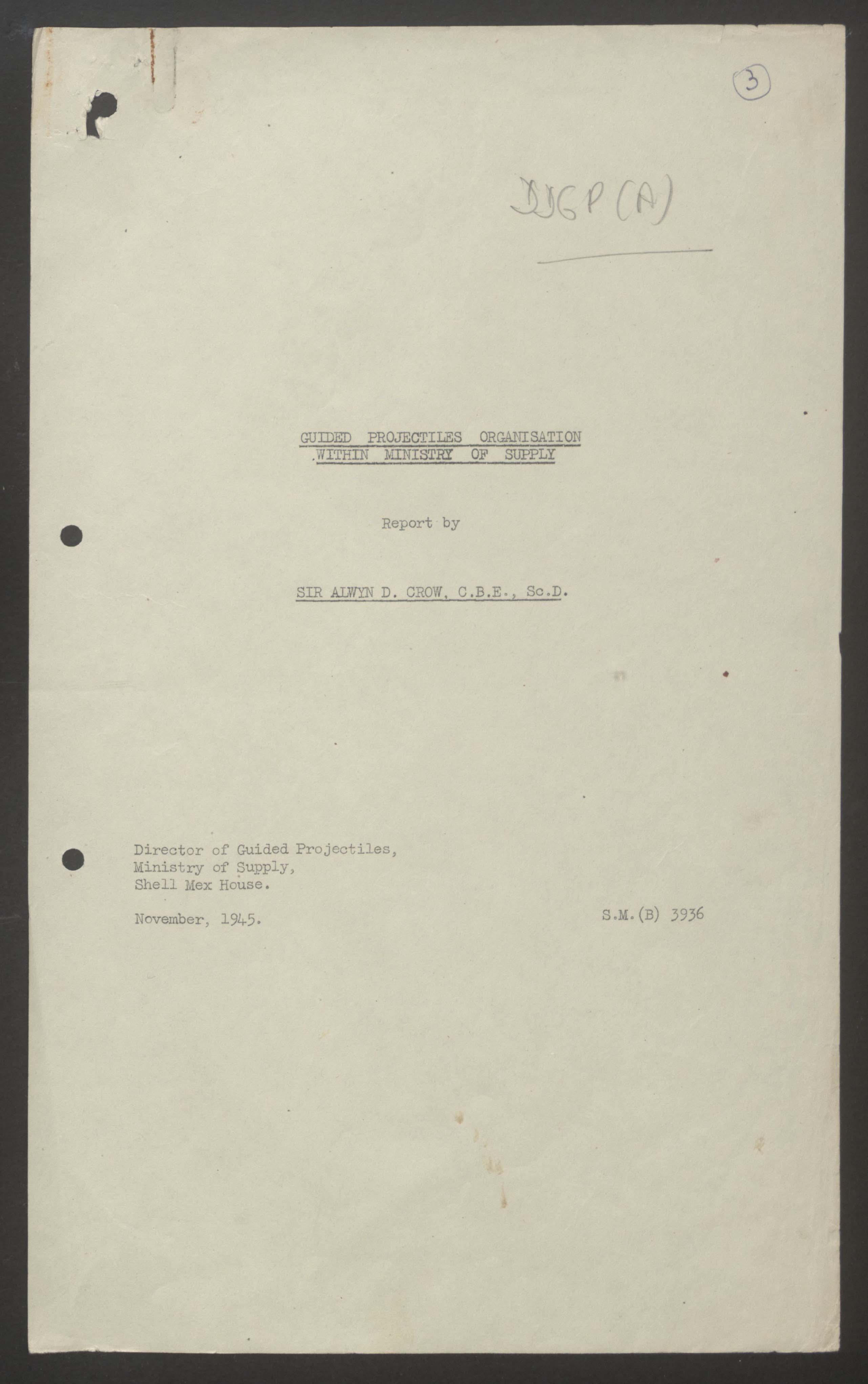

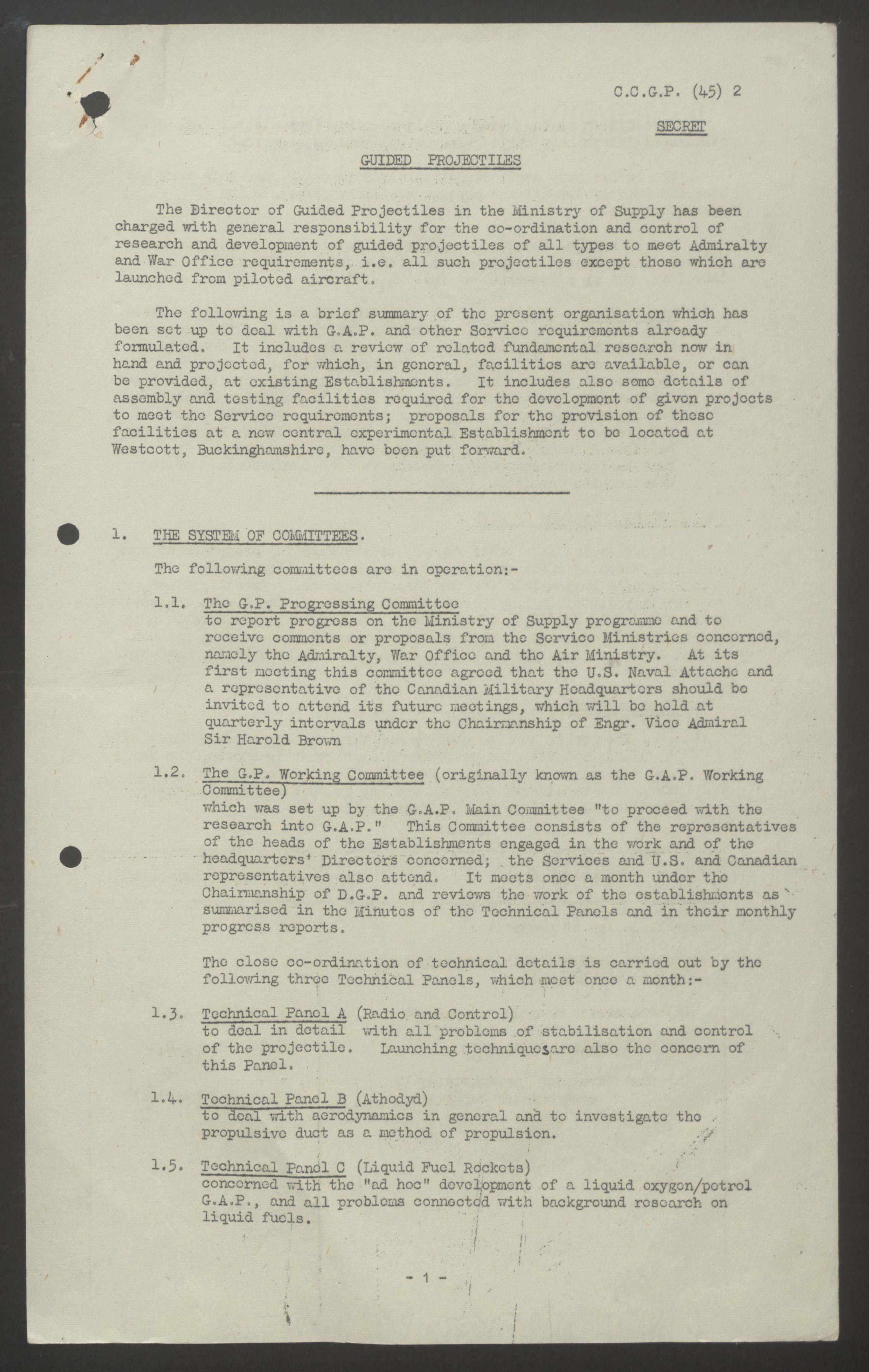

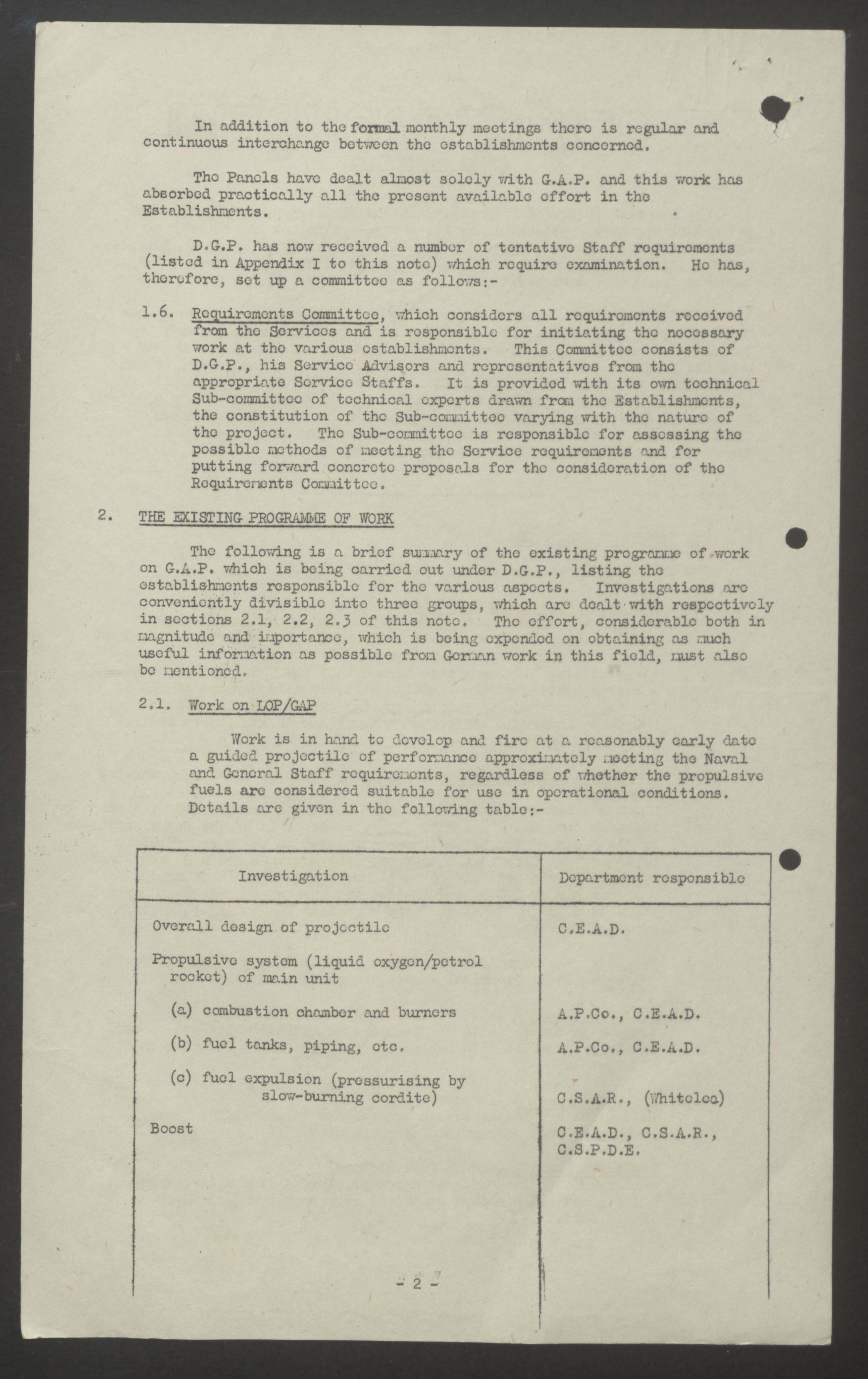









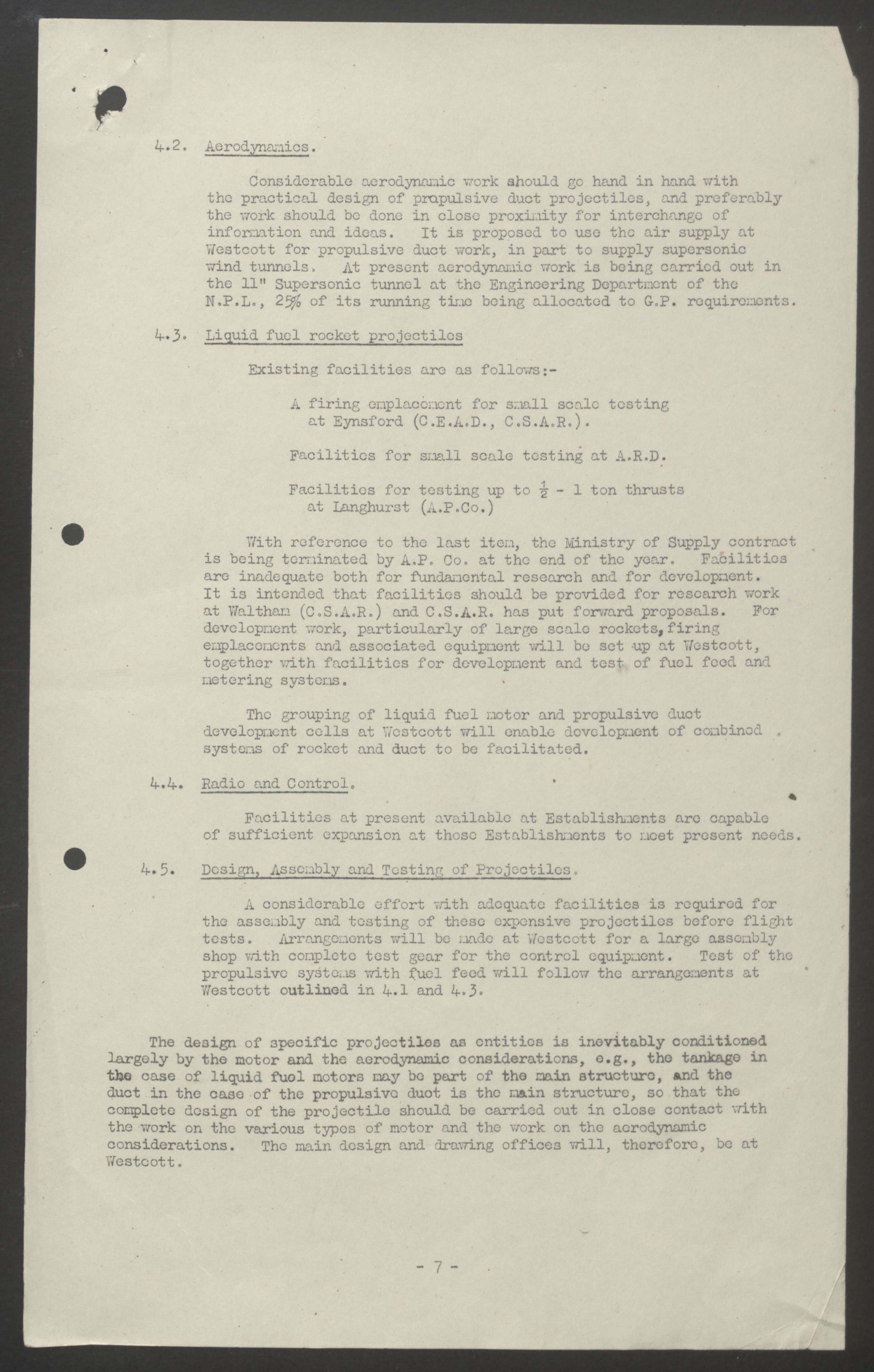

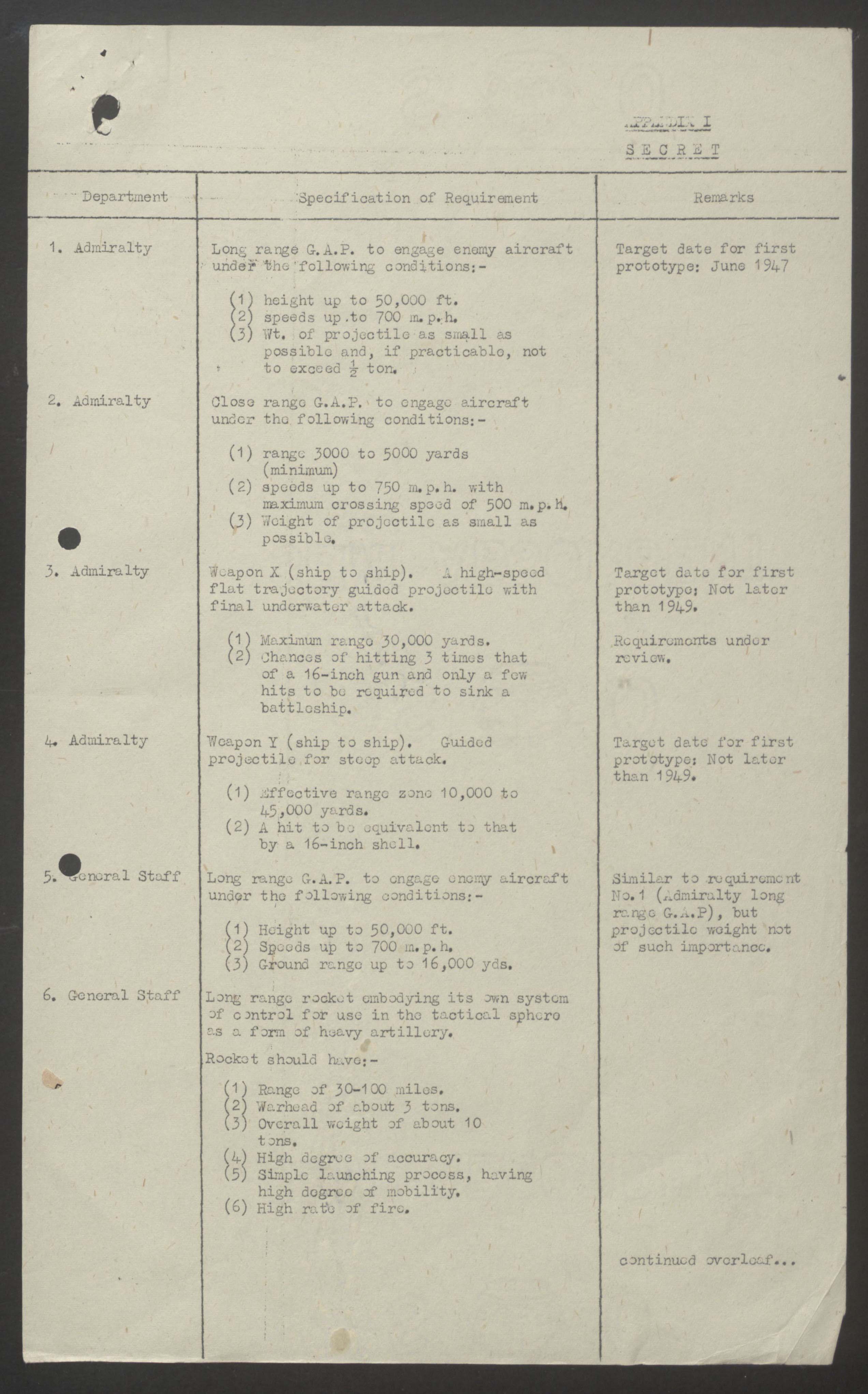

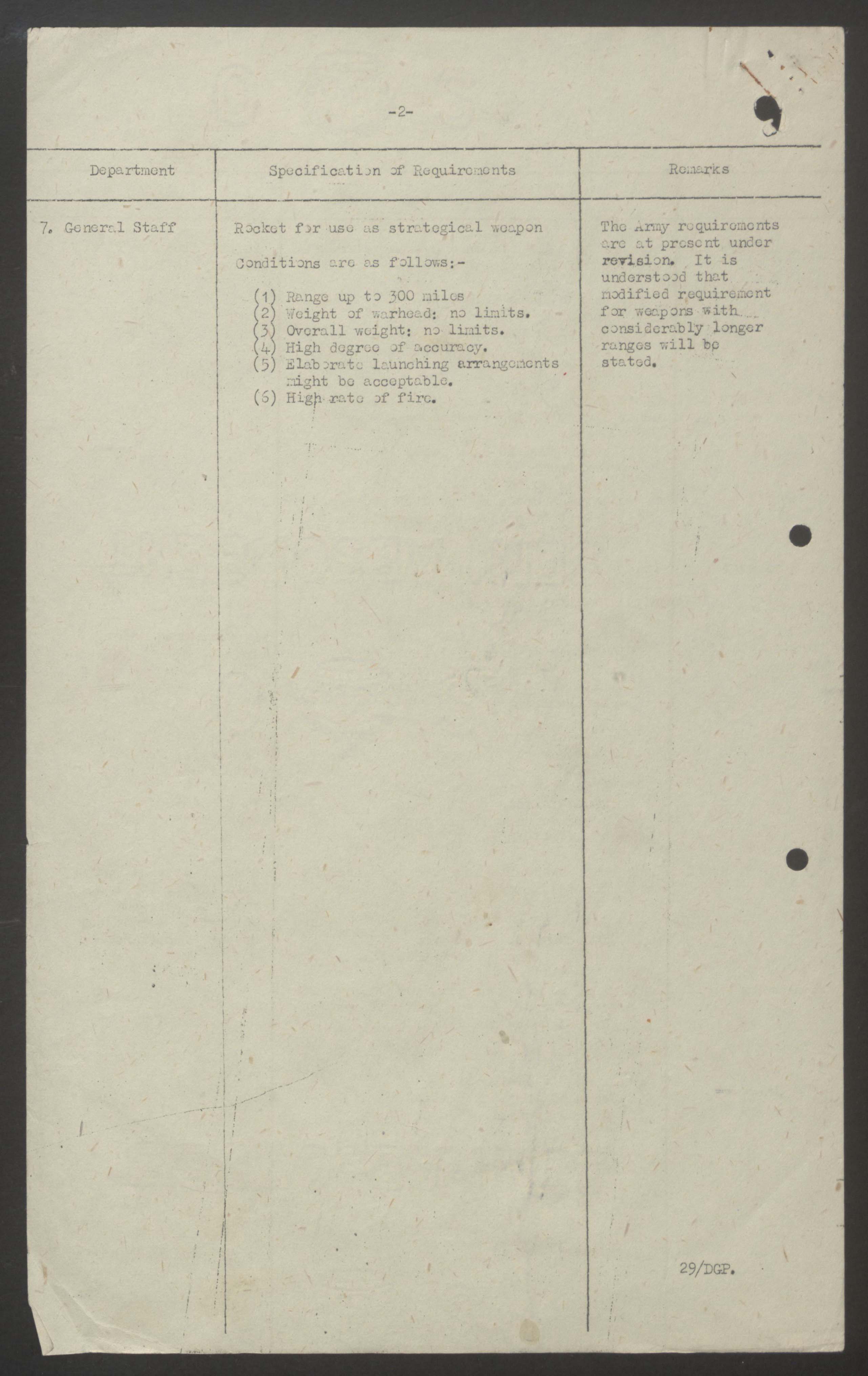




Oes gennych chi wybodaeth ychwanegol am yr eitem hon? Gadewch sylwad isod
Sylwadau (0)
Rhaid mewngofnodi i bostio sylw